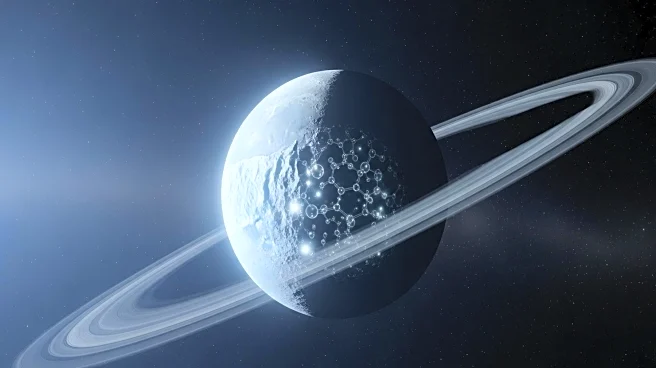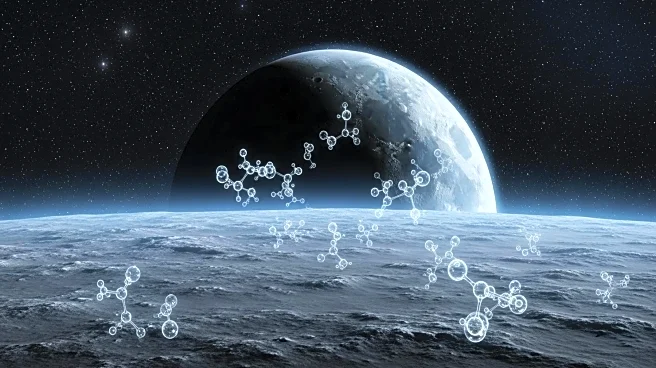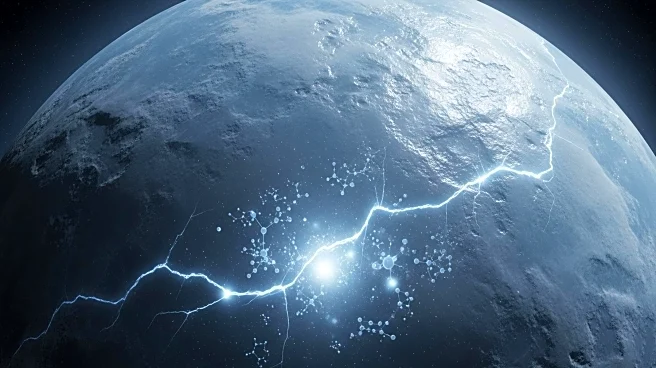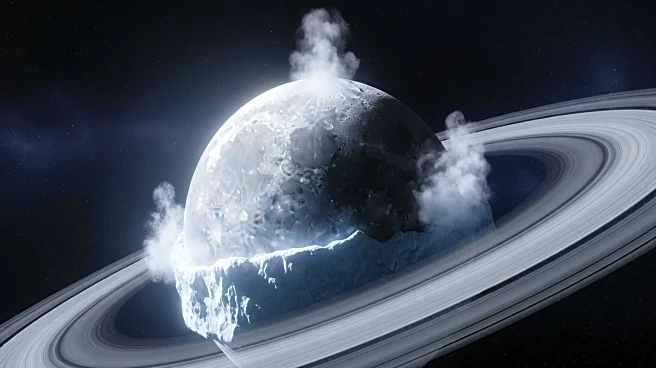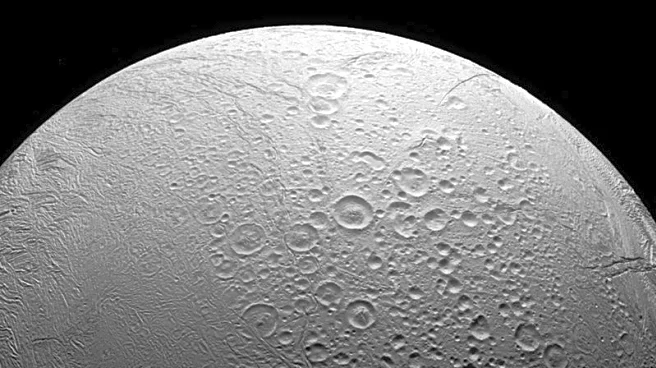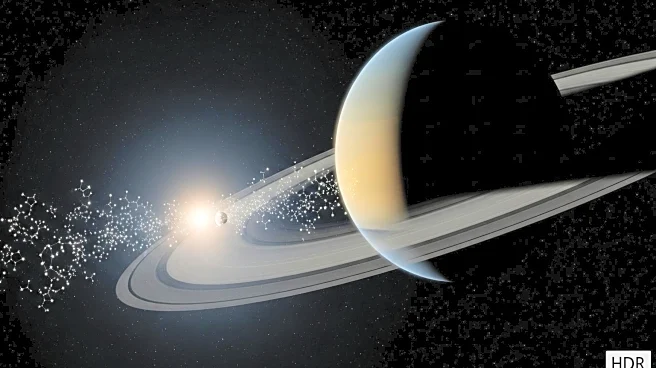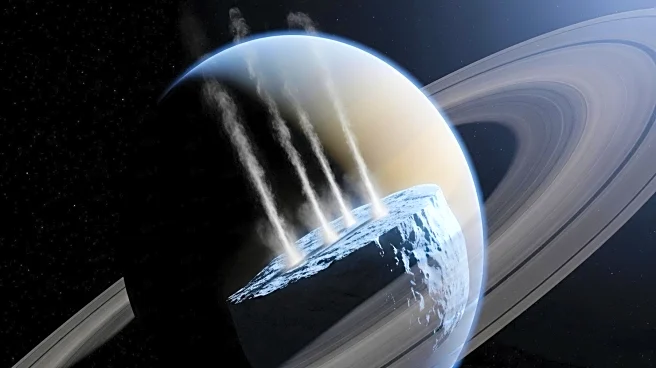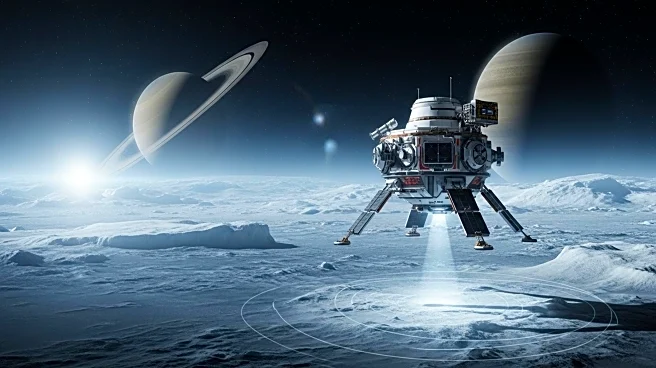What's Happening?
Scientists analyzing data from NASA's Cassini spacecraft have discovered new complex organic molecules in ice grains ejected from Saturn's moon Enceladus. These findings suggest that complex chemical reactions are occurring within the moon's subsurface ocean, potentially leading to biologically relevant molecules. The discovery, published in Nature Astronomy, strengthens the case for a dedicated European Space Agency mission to further explore Enceladus. The Cassini spacecraft, which first detected evidence of Enceladus's hidden ocean in 2005, collected data by flying through the moon's icy plumes. The recent analysis revealed that certain organic molecules found in Saturn's E ring are also present in the fresh ice grains, confirming their origin within Enceladus's ocean.
Why It's Important?
The discovery of complex organic molecules on Enceladus is significant as it enhances the possibility that the moon could support life. The presence of liquid water, energy sources, and complex organic compounds makes Enceladus a prime candidate for habitability. This finding could influence future space exploration missions, particularly those focused on searching for extraterrestrial life. The potential for life on Enceladus could have profound implications for our understanding of life's existence beyond Earth, prompting further scientific inquiry and exploration.
What's Next?
The European Space Agency is considering a mission to Enceladus to collect samples directly from the moon's surface. This mission would involve flying through the jets and landing on the south polar terrain. The selection of scientific instruments for this mission is underway, guided by the latest findings from Cassini data. Such a mission could provide definitive evidence of life or further insights into the moon's habitability, offering a significant advancement in solar system science.

